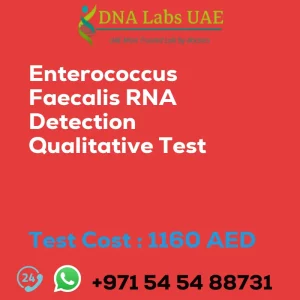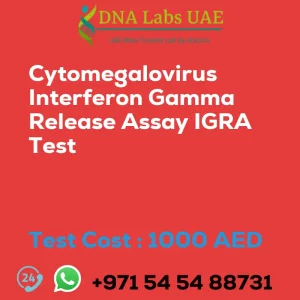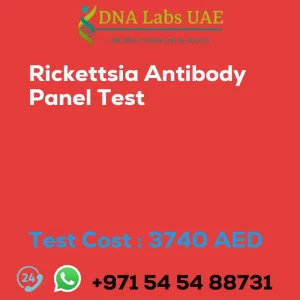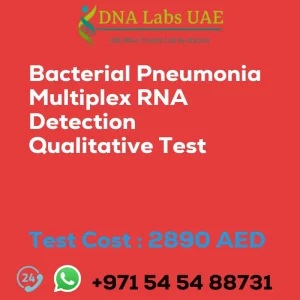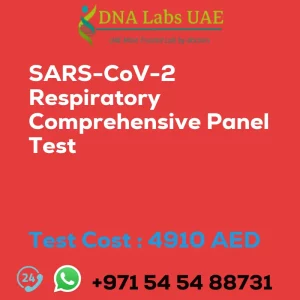Strachybotrys RNA Detection Qualitative Test
Cost: AED 1160.0
Symptoms, Diagnosis, and Test Details
The Strachybotrys RNA Detection Qualitative Test is a diagnostic tool used to detect the presence of RNA from the Strachybotrys species of mold. This test is specifically designed to identify the RNA of Strachybotrys, which is a type of mold known for producing mycotoxins that can be harmful to human health.
The test works by extracting RNA from a sample, typically collected from an indoor environment suspected of mold contamination. The sample can include fresh tissue biopsy specimens, skin biopsy specimen from a patient with disseminated nodular skin lesions, tissue specimens from a variety of body sites (brain, skin and soft tissue, eye, bone, lung, cardiac valve, and bone marrow), peripheral blood specimens, and respiratory secretions.
The sample is then processed using specialized reagents to isolate and amplify the RNA of Strachybotrys if it is present. This amplification process allows for the detection of even small amounts of Strachybotrys RNA in the sample.
The qualitative nature of the test means that it provides a simple “yes” or “no” answer regarding the presence of Strachybotrys RNA in the sample. If the test result is positive, it indicates the presence of Strachybotrys mold in the tested environment, and further action may be required to address the mold contamination and mitigate any potential health risks.
It is important to note that this test only detects the presence of Strachybotrys RNA and does not provide information about the concentration of mold spores or the specific mycotoxins produced by the mold. Additional testing may be necessary to obtain a more comprehensive assessment of the mold contamination and its potential health implications.
Test Information
- Test Name: Strachybotrys RNA Detection Qualitative Test
- Components: RNA detection reagents
- Price: AED 1160.0
- Sample Condition: Fresh tissue biopsy specimens, skin biopsy specimen from a patient with disseminated nodular skin lesions, tissue specimens from a variety of body sites (brain, skin and soft tissue, eye, bone, lung, cardiac valve, and bone marrow), peripheral blood specimens, respiratory secretions
- Report Delivery: 4th Working Day via Email (48 hours) or Phone (36 hours)
- Method: Real Time RT-PCR
- Test Type: Viral
- Doctor: Physician
- Test Department: Genetics
- Pre Test Information: Consent document and any clinical history of patient required
| Test Name | Strachybotrys RNA Detection Qualitative Test |
|---|---|
| Components | |
| Price | 1160.0 AED |
| Sample Condition | fresh tissue biopsy specimens, skin biopsy specimen from a patient with disseminated nodular skin lesions, tissue specimens from a variety of body sites (brain, skin and soft tissue, eye, bone, lung, cardiac valve, and bone marrow), peripheral blood specimens, respiratory secretions. |
| Report Delivery | 4th Working Day Email : 48 hours.On phone : 36 hours |
| Method | Real Time RT- PCR |
| Test type | Viral |
| Doctor | Physician |
| Test Department: | Genetics |
| Pre Test Information | Need to sign Consent document and bring any clinical history of patient forStrachybotrys (RNA Detection) QualitativeTest |
| Test Details |
The Strachybotrys (RNA Detection) Qualitative Test is a diagnostic tool used to detect the presence of RNA from the Strachybotrys species of mold. This test is specifically designed to identify the RNA of Strachybotrys, which is a type of mold known for producing mycotoxins that can be harmful to human health. The test works by extracting RNA from a sample, typically collected from an indoor environment suspected of mold contamination. The sample is then processed using specialized reagents to isolate and amplify the RNA of Strachybotrys if it is present. This amplification process allows for the detection of even small amounts of Strachybotrys RNA in the sample. The qualitative nature of the test means that it provides a simple “yes” or “no” answer regarding the presence of Strachybotrys RNA in the sample. If the test result is positive, it indicates the presence of Strachybotrys mold in the tested environment, and further action may be required to address the mold contamination and mitigate any potential health risks. It is important to note that this test only detects the presence of Strachybotrys RNA and does not provide information about the concentration of mold spores or the specific mycotoxins produced by the mold. Additional testing may be necessary to obtain a more comprehensive assessment of the mold contamination and its potential health implications. |


